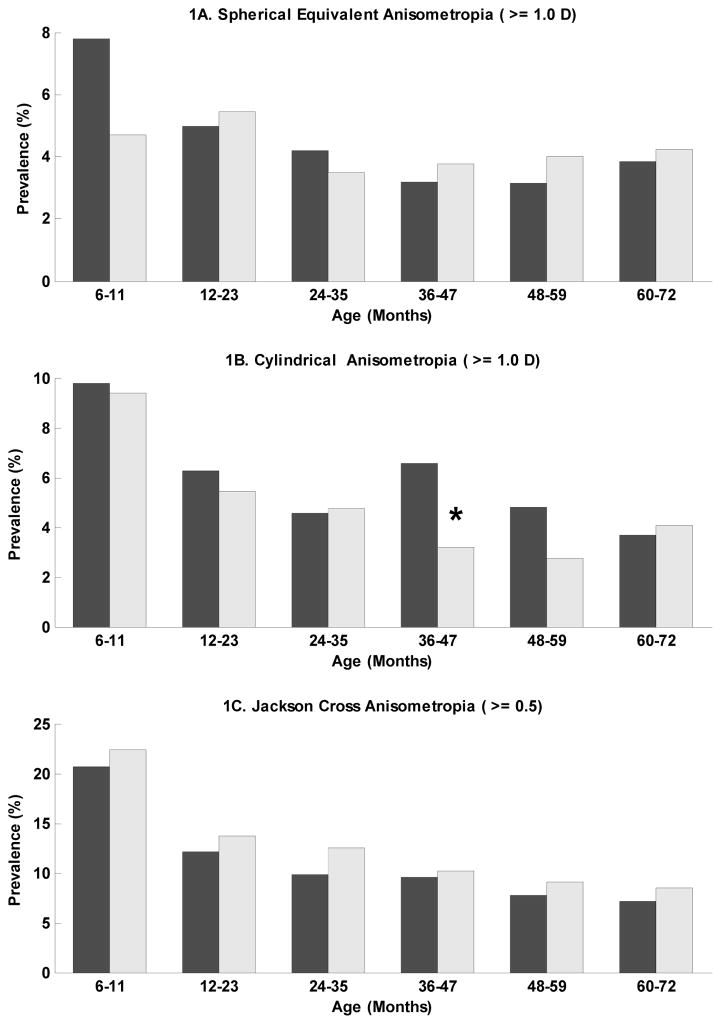Figure 1.
The prevalence of different forms of anisometropia is shown by age and ethnicity (dark bars = Hispanics; light bars = African-Americans). The prevalence of spherical equivalent (SE) anisometropia ≥1.0 diopters (D) is stable beyond 12 months of age for both ethnic groups (Fig 1a). The prevalence of cylindrical anisometropia ≥1.0 D is stable beyond 12 months of age except in the 36–47 month age group, in which it is significantly more prevalent (*) in Hispanics compared to African-Americans (Fig 1b). The prevalence of Jackson Cross anisometropia ≥0.5 steadily decreases with age (Fig 1c). The total number of African American and Hispanic children examined was 2994 and 3030 respectively.

